K-12 Textbooks Authored by
UNC Faculty: 1922 - 1980
- About
-
Robert W. Larson, in his history of the University of Northern Colorado, states that during President "Frasier's quarter-century tenure, unquestionably UNC's 'golden age,' the percentage of faculty who published was high. …Teachers throughout the nation were using textbooks and reference books authored by Greeley professors" (p. 430). This online exhibit focuses on K-12 textbooks authored by UNC faculty beginning in 1923, running through Frasier's tenure, and ending in 1980.
Information about each UNC faculty author is provided under the Authors tab. The descriptions of the textbooks attempt to assess their impact based on reviews, when available, and their adoption by key textbook adoption states.
- Textbooks
-
Little Grammar (1922)
by E.A. CrossPublisher: Atlantic Monthly
Grade Level: Junior HighDeveloped in response to a bet that Cross could "write a grammar that contained everything one needed to know in less than one hundred pages" (Larson, p.157), this textbook was lauded not only for its small size but for being in line with the newest thought by defining the place for the teaching of "functional grammar" apart from the teaching of literature and composition (McCoy, p.151).
Social Science Pamphlets (1923)
by Earle U. Rugg and othersPublisher: self-published
Volumes: 10
Grade Level: Junior HighThis experimental textbook, developed by Earle Rugg with his older brother Harold Rugg, was tested in about 100 schools. The problem-centered multidisciplinary approach to social studies education, reflected in this text, challenged students to examine changes occurring in current society. After a 2nd experimental edition, it was published commercially by Ginn as Man and His Changing Society in 1929-32. Ten years later the textbook was banned in many schools and burned in a few.
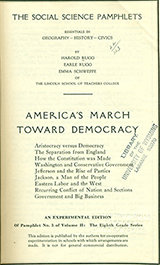
Little Book of English Composition (1926)
by E.A. CrossPublisher: Little Brown
Grade Level: Junior HighThis companion book to Little Grammar was described as a "wholly admirable drill book" that ignored the "growing conception that English composition…is the principal secondary-school training ground in thinking" (Lyman, p. 631).
Learning to Spell (1931)
by George Willard Frasier and othersPublisher: Hall & McCreary
Volumes: 2
Grade Level: 2-8The word list included in this spelling book is a result of a comparative scientific study by Dr. Coleman of all vocabulary studies of note from the last twenty years, published as Colorado State Teachers College Education Series, no. 12.
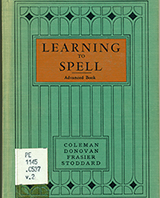
Colorado: The People and Their Government (1936)
by I. James QuillenPublisher: Allyn and Bacon
Grade Level: Junior HighThis state specific text served as a supplement to social science textbooks of R. O. Hughes.
Discovering Our World, Book One (1937)
by Glenn O. Blough and othersPublisher: Scott, Foresman
Grade Level: 4This first volume of three for elementary science in the middle grades is composed of eight units with an emphasis on direct observation, experimentation, and development of a scientific way of thinking. M. Lucile Harrison is acknowledged as having reviewed the text for reading difficulty.
Scientific Living Series: How and Why Science Book (1937-41)
by George Willard Frasier, Helen Dolman, Kathryne Van Noy, and Francis ShoemakerPublisher: Singer
Grade Level: K-6Adopted on publication by Texas and Alberta, Canada, this elementary science set filled a void in available science textbooks, only three others available at the time (Larson, p. 123). The illustrations were done in four colors by a new lithograph process, making them unlike the usual textbook in appearance (First of school, p. 8). The series was adopted by the state of California in 1944 and the second edition was adopted in Texas for use from 1950-9.
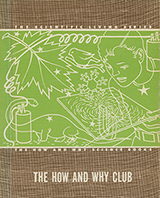
Highways and Byways: Child Development Readers (1938)
by Paul McKee and anotherPublisher: Houghton Mifflin
Grade Level: 6Described as "singularly unattractive" in appearance, the school reader contained "cut to fit" stories that were "overwhelmingly civic-minded" like many other readers (Barnes, p. 477).
Pioneering in Ten Communities / Ten Communities (1940)
by I. James Quillen and othersPublisher: Scott, Foresman and Company
Grade Level: 4-5Pioneering in Ten Communities was published as part of the Curriculum Foundation Series of elementary textbooks that established the Paul Hanna "expanding environments" model of elementary social studies curriculum still in use today. The text was also published under the title Ten Communities. One of the ten communities is Greeley, Colorado.
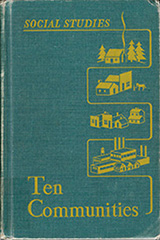
Language for Meaning (1941-43)
by Paul McKee, M. Lucile Harrison, and Annie McCowenPublisher: Houghton Mifflin
Grade Level: 2-6Developed at the request of the head of the Educational Division of Houghton Mifflin, this set was a "dramatic departure" from the typical elementary English textbook in that it was organized by "language jobs" that integrated grammar and writing toward an applied end product. Despite the derision for its unusual size, larger than most textbooks, and two column format, it achieved 85% of the language arts textbook market (Miller, p. 1215). Annie McCowen was present in Georgia at the announcement of this textbook being on her home state's approved textbook list in 1941. It was adopted for use in Alberta, Canada from 1945-1961 and in Texas from 1953-67.
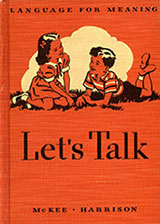
Youth and Jobs: Young America Rolls Up Its Sleeves (1942)
by Douglas S. Ward and Edith M. SelbergPublisher: Ginn and Company
Grade Level: High SchoolThis title is one of 12 "Experimental Units" developed, tested in schools, and published under the auspices of the North Central Association of Colleges and Secondary Schools in cooperation with the Progressive Education Association to supplement existing high school textbooks. The purpose of these units was to lead "high school students into a study of the real issues of American life" (Davis, p. 91). This unit drew on youth surveys from the previous decade dealing with youth unemployment.
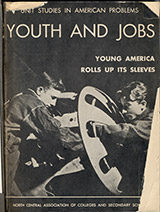
English for Meaning (1942-45)
by Paul McKee and othersPublisher: Houghton Mifflin
Grade Level: 7-9Paul McKee was appointed editorial advisor in Language Arts for Houghton Mifflin in 1937. This textbook set that he edited was developed as an extension of McKee's Language for Meaning. It provided the "mechanics and techniques needed to develop good reading and skills in studying as well as integrating language with reading" (Sprague, p.118).
Literature a Series of Anthologies (1943-46)
edited by E. A. Cross, Elizabeth Lehr, Neal M. Cross and othersPublisher: Macmillan
Volumes: 7
Grade Level: 7-12Containing selections of "outstanding literary quality" that will "appeal to the interest of the pupils," these texts, though "large and heavy," are attractive in format with "pen and ink illustrations" by Caldecott award winning illustrators Maud and Miska Petersham (Lemon, p. 502-3). Adopted by Texas for use from 1950-59.
Reading for Meaning (1949-56)
by Paul McKee, M. Lucile Harrison, Annie McCowen, and Elizabeth LehrPublisher: Houghton Mifflin
Grade Level: K-6This series "did differ from the others in that it has a stronger phonetic emphasis at the beginning" (Chall, p. 201). The Getting Ready to Read phonics base of the set remained with the later editions of the top selling Houghton Mifflin Reading series. "The revenues earned through the many editions of the McKee reading program and, yes,Language for Meaning, gave Houghton Mifflin the resources to become the predominant educational publisher during most of the last half of the 20th century" (Miller, p. 6). It was on the Texas Textbook Adoption list from 1951-71 and the Alberta, Canada adoption list from 1957-69.
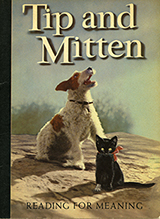
Singer Science Series (1955-57)
by George Willard Frasier, Helen Dolman MacCracken, and Donald DeckerPublisher: Singer
Grade Level: K-9Described in ads as being an up-to-date series in which principles are learned and made usable through the book-by-book spiral-like development of the program.
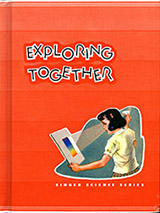
Reading for Enjoyment: Adventure Bound, Journeys into America (1956)
by Paul McKee and othersPublisher: Houghton Mifflin
Grade Level: 7-8Containing "old-time favorites" and "some good contemporary literature for young people," these textbooks provide for "stimulating, well-balanced, meaty reading" that "offer a real challenge to all teachers interested in the development of young people" (Trezevant, p. 295).
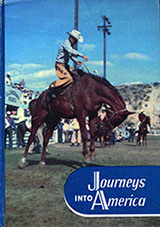
Singer Science (1959, 1962-63)
by George Willard Frasier, Helen Dolman MacCracken, and Donald DeckerPublisher: Singer
Grade Level: 1-9The texts are described in ads as having a strong activity program with spiraling development and a problem-solving approach.
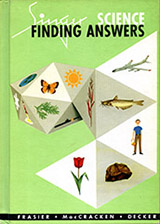
English for Meaning (1959-63)
by Paul McKee, M. Lucile Harrison, Annie McCowen and othersPublisher: Houghton Mifflin
Grade Level: 1-8Described in ads as an outgrowth of the successful Language for Meaning series, this set offered early and consistent study of English grammar with provisions for individual differences and extensive practice and review.
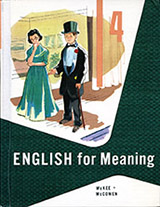
Singer Science: Life, Earth and Physical (1964)
by Helen Dolman MacCracken, Donald Decker and othersPublisher: Singer
Grade Level: 7-9The 3 volumes were adopted by the state of California in 1967 and the Life and Earth volumes were on the Texas Textbook Adoption list from 1965-71. Alberta, Canada adopted the second edition of the Earth volume for use in 1972-3.
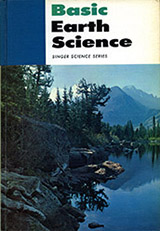
Singer Science: Science Through Discovery (1967-69)
by Helen Dolman MacCracken, Donald G. Decker, Robert B. Sund, Leslie W. Trowbridge and othersPublisher: Singer
Grade Level: 1-6Ads describe this set as a comprehensive program that balances life, earth and physical sciences in each grade, also including contemporary topics like air and water pollution. This set was on Texas Textbook Adoption list from 1968-72.
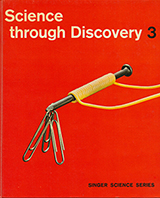
Science for Human Value (1972)
by Helen Dolman MacCracken, Donald G. Decker, Robert B. Sund, Leslie W. Trowbridge and othersPublisher: Follett
Grade Level: 1-6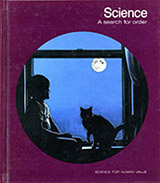
Accent on Science (1980)
by Robert B. Sund, Donald K. Adams, Jay K. Hackett and anotherPublisher: Merrill
Grade Level: K-6The total program was deemed "quite impressive," offering the basic structure for either teacher-directed or an activity-oriented approach with "solid content and sound teaching assistance" (Kennedy, p. 265). The third edition of this set was on the Texas adoption list from 1985-91.
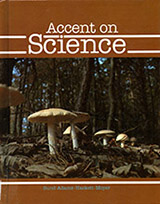
- Authors
-

Donald K. Adams
Professor of Educational Field Experiences 1971-1993; Received his doctorate in science education from UNC in 1971Textbooks
Accent on Science (1980)
Glenn O. Blough
Assistant Professor in science education at the Laboratory School 1936-7Glenn Blough served as the major advisor for Donald Decker's 1937 Master's thesis analyzing three elementary science textbook series. Blough was hired to teach science at the Laboratory School at UNC starting in the fall of 1936. He had formerly worked at the laboratory school at Eastern Michigan University, known then as Michigan State Normal College, in Ypsilanti, Michigan. His wife, Helen Dolman Blough, was also a science teacher at M. S. N. C. After a year, Glenn took a leave of absence and his wife took over her husband's position at the UNC Laboratory School, at a lesser salary. Glenn Blough never returned to Greeley, but Helen Dolman (Blough) MacCracken remained for several years becoming an accomplished science textbook author along with Michigan State Normal College alums, George Frasier and Donald Decker.
Textbooks
Discovering Our World, Book One (1937)
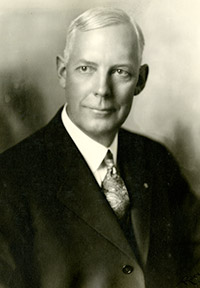
E.A. Cross
Professor of English 1906-1941; Dean 1917-1926; Vice-President 1926-31; Served as president of National Council of Teachers of English in 1940-1"This handsome English professor, with his droll sense of humor and his look of a Hoosier schoolmaster…had a superb stage presence and appeared in a number of faculty plays (Larson, p.157)."
Textbooks
Little Grammar (1922)
Little Book of English Composition (1926)
Literature a Series of Anthologies (1943-46)
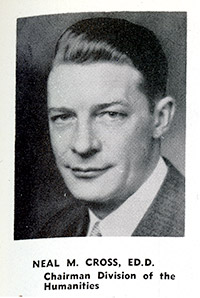
Neal M. Cross
Professor of English 1941-76; Chair of Division of Humanities 1951-62Neal Cross was the son of E. A. Cross.
Textbooks
Literature a Series of Anthologies (1943-46)
Donald Decker
Professor of Science Education 1948-75; Chairman of the Division of Science 1948-54; Dean of College 1950-65; Provost 1965-1971; Dean of School of Educational Change and Development 1971. Served as president of the National Science Teachers Association 1959-60.Decker taught science in the Laboratory School while getting his masters from UNC in 1937. His thesis, "An Analysis of the Content of Three Series of Elementary Science Books," provided a research basis for the development of the Frasier How and Why Science series.
Textbooks
Singer Science Series (1955-57)
Singer Science (1959, 1962-63)
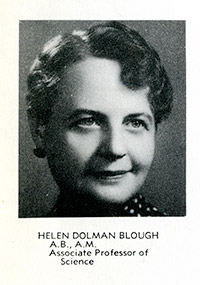
Helen Dolman (McCracken)
Instructor in science education at the Laboratory School 1937-1945; Awarded an honorary doctorate from UNC in 1950Textbooks
Scientific Living Series: How and Why Science Book (1937-41)
Singer Science (1959, 1962-63)
Singer Science: Life, Earth and Physical (1964)
Singer Science: Science Through Discovery (1967-69)
Science for Human Value (1972)
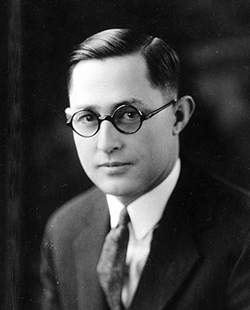
George Willard Frasier
Dean of Graduate School 1923-4; President 1924-1948Frasier was "an erect and handsome six-footer…often seen on the tennis court, his shirt off, playing a competitive game with a faculty member…He had a reputation of being an excellent dancer and could make students feel at home at all activities he attended. Frasier was a charming extrovert (Larson, p. 124)."
Textbooks
Learning to Spell (1931)
Scientific Living Series: How and Why Science Book (1937-41)
Singer Science Series (1955-57)
Singer Science (1959, 1962-63)

M. Lucile Harrison
Instructor of Primary Education at the Laboratory School 1926-1947; Professor of Elementary Education 1948-1962; endowed the M. Lucile Harrison Award for professional excellence in teachingGeorge Manuel Fenollosa from Houghton Mifflin remembered Harrison's "selflessness and devotion to work (Miller, p. 123)." Carol Case, who worked in advertising for Houghton Mifflin in the Educational Division, met Harrison and described her as "very gracious (Miller, p. 1838)."
Textbooks
Language for Meaning (1941-43)
Reading for Meaning (1949-56)
English for Meaning (1959-63)
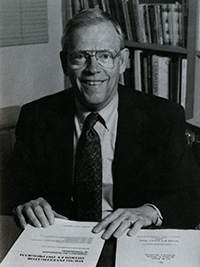
Jay K. Hackett
Professor of Earth Sciences 1973-1998; Received a doctorate in science education at UNC in 1972Hackett believed the constructivist views on how people learn.
Textbooks
Accent on Science (1980)
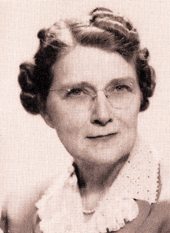
Elizabeth Lehr
Instructor in Elementary Education at the Laboratory School 1926-69"Lehr, also a member of the Ernest Horn faculty, teaching fifth grade, brought into her collaboration with McKee, Harrison, and McCowen a command and feel for children's literature (Larson, p. 163)."
Textbooks
Literature a Series of Anthologies (1943-46)
Reading for Meaning (1949-56)
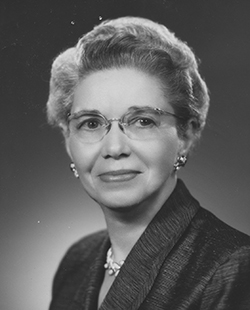
Annie McCowen
Instructor of Elementary Education in Laboratory School 1921-31; Principal of the elementary Laboratory School 1931-2; Professor of Elementary Education 1932-58; Charter member of Sigma Pi Lambda in 1926"Much of her success and easy rapport with students were achieved by a delightful sense of humor and a Georgia drawl described by one colleague as being 'two feet long' (Larson, p. 163)."
Textbooks
Language for Meaning (1941-43)
Reading for Meaning (1949-56)
English for Meaning (1959-63)
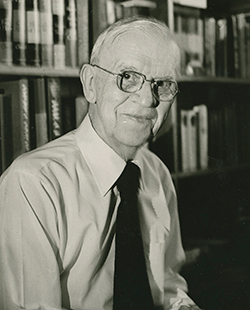
Paul McKee
Professor of Elementary Education 1926-62; Principal of Ernest Horn Elementary School (Laboratory School) 1932-42"McKee, though he tended to stammer, would immediately inform students he had such a problem, go on, and teach an excellent class (Larson, p. 168)."
Jean Muller, a consultant with Houghton Mifflin who received training at Greeley from McKee, says, "I remember what a great teacher McKee was. He never had a note, and he knew where he left off yesterday and where to begin today. He was a teacher who always spoke using the blackboard (Miller, p. 1786)."
Textbooks
Highways and Byways: Child Development Readers (1938)
Language for Meaning (1941-43)
English for Meaning (1942-45)
Reading for Meaning (1949-56)
Reading for Enjoyment: Adventure Bound, Journeys into America (1956)
English for Meaning (1959-63)
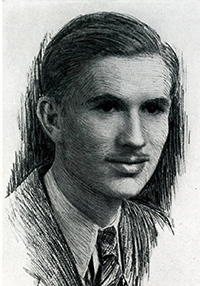
I. (Isaac) James Quillen
Director of Social Studies in the Laboratory Secondary School 1934-36The 1936 high school yearbook was dedicated to Quillen. He was active in the National Council for the Social Studies, serving as its President in 1944 and working on committees with James Michener.
Textbooks
Colorado: The People and Their Government (1936)
Pioneering in Ten Communities / Ten Communities (1940)
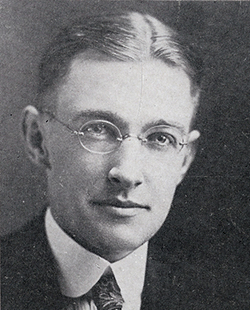
Earl U. Rugg
Head of Department of Education 1923-35; Director of Department of Curriculum and Libraries 1933-41; Chairman of Division of Education 1935-1957; Sponsored the founding of the Alpha-Mu Chapter of Phi Delta Kappa in 1926; Editor of Teachers College Journal and Abstract 1926-1931; One of the founding members of the Dewey Society in 1935Rugg was "an articulate exponent of progressive education" whose "outspoken manner" could "often alienate people even when such reaction was never intended (Larson, p. 158).
Textbooks
Social Science Pamphlets (1923)
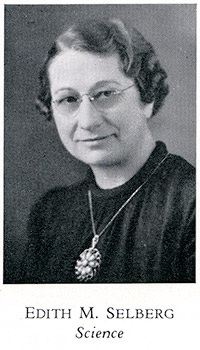
Edith M. Selberg
Instructor of Science at the Laboratory School 1925-62; Associate Professor of Biology 1925-62; received the 45th Science Education Recognition Award from the National Association for Research in Science TeachingEdith Selberg emigrated from Sweden to the United States at the age of three with her foster parents. She graduated from Greeley Normal School in 1916 and obtained her A.B. and M.A. from Colorado State College. James A. Michener, in his foreword to Shaping Education Change, called Edith Selberg a "skilled teacher" (Larson, p. xiv) in the Laboratory School where Michener also taught.
Textbooks
Youth and Jobs: Young America Rolls Up Its Sleeves (1942)
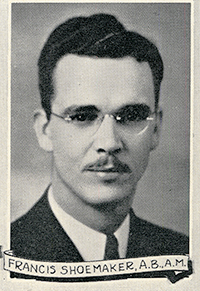
Francis Shoemaker
Assistant Professor of English 1936-1947Shoemaker helped with the writing of the grade 4-6 volumes for the 1st edition of Scientific Living Series: How and Why Science Book.
Textbooks
Scientific Living Series: How and Why Science Book (1937-41)
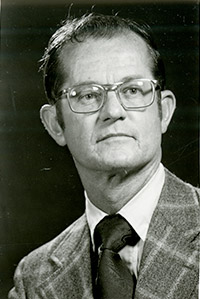
Robert B. Sund
Professor of Science Education 1960-79; Awarded the Distinguished Scholar of the Year in 1974Textbooks
Singer Science: Science Through Discovery (1967-69)
Science for Human Value (1972)
Accent on Science (1980)
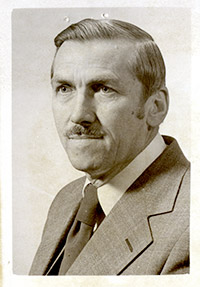
Leslie W. Trowbridge
Professor of Science Education 1962-1983; Chairman of Science Education Department 1970-1983; President of the National Science Teachers Association 1973-4; Awarded the Distinguished Scholar of the Year in 1979Trowbridge played a key role in an international movement that championed inquiry-based science learning.
Textbooks
Singer Science: Science Through Discovery (1967-69)
Science for Human Value (1972)
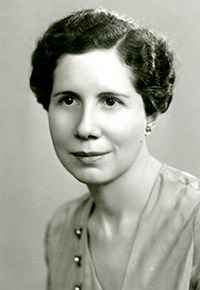
Kathryne Van Noy
Instructor in Elementary Education at the Laboratory School 1938-40Van Noy was an author of children's books, including Jack & Matt of the WX and The Magic Sugar Bowl: The Story of the Sugar Beet.
Textbooks
Scientific Living Series: How and Why Science Book (1937-41)

Douglas S. Ward
Instructor of Social Studies at the Laboratory School 1939-43Douglas Ward came from being the principal of two junior high schools in Boulder to fill the Laboratory School secondary social studies vacancy. In addition to co-authoring the unit Youth and Jobs with the North Central Association, Ward also announced the development of the Problems in American Life series of units co-sponsored by the National Association of Secondary-School Principals and The National Council of the Social Studies at a meeting in Denver in 1942. On the committee to oversee the development of these units were the two previous Laboratory School social studies teachers, I. James Quillen and James A. Michener.
Textbooks
Youth and Jobs: Young America Rolls Up Its Sleeves (1942) - References, More
-
Alberta school curriculum historical bibliography 1885-1985 (Elementary resources). (2013).
Retrieved from University of Alberta Library Guide website: http://guides.library.ualberta.ca/albertaschoolcurrhistbibelementary
Alberta school curriculum historical bibliography 1885-1985 (Secondary resources). (2013).
Retrieved from University of Alberta Library Guide website: http://guides.library.ualberta.ca/albertaschoolcurrhistbibsecondary
Barnes, W. (1939). School-centered readers. Elementary School Journal, 39(6), 476-477.
Chall, J. S. (1967). Learning to read: The great debate. New York: McGraw-Hill.
Davis, C. O. (1945). A history of the North Central Association of Colleges and Secondary Schools, 1895-1945. Ann Arbor, MI: North Central Association of Colleges and Secondary Schools.
First of school science books by Dr. Frasier and associates has been issued by publishers. (1937, October 26). Greeley Daily Tribune, p. 8.
Kennedy, K. (1980). Accent on Science. Curriculum Review, 19(3), 264-265.
Larson, R. W. (1989) Shaping educational change: The first century of the University of Northern Colorado at Greeley. Boulder, CO: Colorado Associated University Press.
Lemon, B. (1943). Extending literary horizons for junior high school pupils. School Review, 51(8), 502-503.
Lyman, R. L. (1926). Minimals in composition. Elementary School Journal, 26(8), 630-631.
McCoy, M. J. (1923). A course in usage. School Review, 31(2), 150-151.
Miller, H. T. (2012). Conversations about publishing: Conversations with 20th century publishers. Katy, TX: Pen and Press.
Sprague, S. H. (1945). English for Meaning series. Clearing House, 20(2), 118.
Texas Department of Education. (1929-2001). Texas adopted textbook list. Retrieved from University of Texas at Austin Digital Repository website: http://repositories.lib.utexas.edu/handle/2152/19095
Trezevant, B. (1956). Adventure Bound. English Journal, 45(9), 295.
More Textbook History
The first junior high school opened in 1909. By the 1930's, junior high schools were widely in use. As there were few textbooks written specifically for this level, it is understandable that textbook authors and publishers in the 1920's and 1930's would target this new student grouping.
While the teaching of history dominated in secondary schools, the term 'social studies' was in use and being discussed in the 1920's. During this time, social studies integrated history, geography, civics, and other social sciences for the purpose of developing in the students the knowledge and skills for becoming good citizens. In 1921, a new organization was formed by Earle U. Rugg and five colleagues to bring together interested teachers and administrators to further the education for citizenship through the teaching of social studies. That organization was the National Council for the Social Studies.
The success of a textbook series increasingly depended on it being adopted by one of the large textbook adoption states, California or Texas. Harold T. Miller, former president of Houghton Mifflin, and Michael Shaw, Dallas Office Manager of Houghton Mifflin, recount what a textbook adoption in the state of Texas was like.
"Sid helped to coordinate the Texas adoption work. And at that time, in the early '70's …they had a lot of restrictions, curriculum-wise, but it was wide open for calling on committee members. And as we used to say, 'You didn't call on them, you moved in with them.' Because you could start calling on them in April. And you could call on them all the way until August, when they voted. …They had a process at the time that for the last two weeks we had one final shot. We could go in and give a presentation. …Sid knew…that at that point they probably had had 14 presentations from us. They had met the authors, they had seen us repeatedly. … He knew Reading for Meaning, and he knew what we were, and, at that time, as you know, the real power was Getting Ready to Read. …Sid, at the closing of his talk to all the committee members, threw Getting Reading to Read on the floor. And he just stopped and looked at it. And everybody kind of freaked. Then Sid walked over and he stood on the book and he said, 'I don't know about anything else, but this is the foundation we stand on!' …And after that vote, which was a real tough one …we had committee members who, when we went back in before them said, 'That was one thing we'll never forget.'…Getting Ready to Read stood alone – nobody else could touch it" (Miller, p. 1544).

